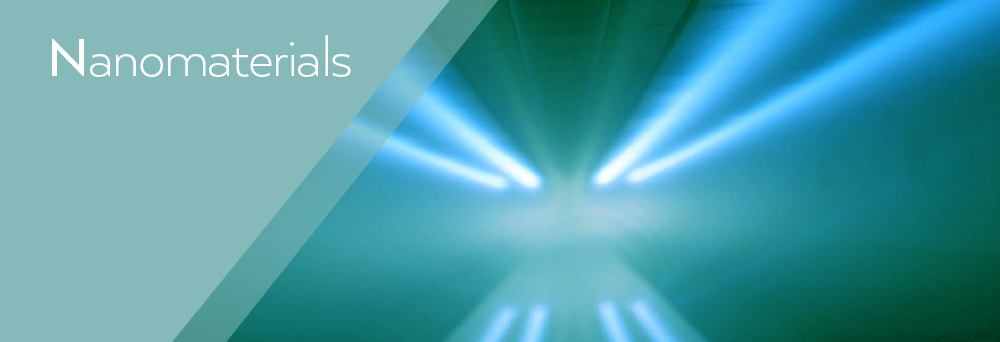Glass for Europe statement on
Nanomaterials and glass coatings
The Commission adopted on 18 October 2011 a recommendation on the definition of Nanomaterial (2011/696/EU)[1] meant to be used as a reference for determining whether a material should be considered to be a ‘nanomaterial’ for legislative and policy purposes in the European Union. Since, the definition, or core parts of it, has been transposed in sector specific EU legislation (e.g. Biocidal Products Regulation, annexes of REACH).
The Joint Research Center (JRC) published in February 2019 an overview of concepts and terms used in the European Commission’s definition of nanomaterial (NM)[2], which supports the idea to keep the definition recommended in 2011 as the European Commission nanomaterial’s definition is generally in line with other approaches worldwide (i.e. based on material containing particles in an unbound state, with nano-scale external dimensions range).
Due to the various potential implications of this definition and its links with other regulatory requirements, Glass for Europe would like to comment on the applicability of this definition of nanomaterials to coated flat glass products.
Some flat glass products have coatings applied that are between 1 nm and 100 nm thick and can be described as using nanotechnology. The thickness of the coatings imparts particular properties, but the coatings are not nanomaterials and do not contain nanoparticles. It is also important to note that customers are not exposed to nanoparticles during the lifetime of the products.
This statement is in line with the Commission staff working paper on Types and uses of nanomaterials, including safety aspects[3] which states that “nanostructured materials are not covered by the current EU definition of nanomaterials”.
Rationale
In the fabrication of a number of flat glass products, coating technologies are used to impart critical properties to the products, such as thermal insulation, solar control and antireflective properties. Many of these products have multiple coatings of various thickness (1-500 nm) applied to the glass substrate. Due to the thickness of the coatings, these products are sometimes described as being manufactured using nanotechnologies.
Coatings are based on thin films of polycrystalline or amorphous materials (metals, oxides, nitrides, etc.) in the thickness range noted above. The deposition technologies used in the EU are well known, such as magnetron sputtering and chemical vapour deposition. The coatings obtained by using these technologies are physically linked to the glass substrate. They are an integral part of the product and do not come off the glass during use.
THESE COATINGS DO NOT CONTAIN NANOPARTICLES IN AN UNBOUND STATE BUT CAN BE CONSIDERED AS NANOSTRUCTURED MATERIALS UNDER THE DEFINITION IN ISO/TS 80004-4[4]
Nanostructured materials are generally excluded from the EU nanomaterials (NM) definition adopted in 2011 unless they meet the external particle size criteria (i.e. “if at least half of their constituent particles have external dimensions between 1 nm and 100 nm”). The JRC report from 2019 defends the current focused NM definition by clarifying that “the inclusion of other types of nanostructured materials not covered by the EC NM definition (…) would significantly change the scope of the EC NM definition. The broad scope of the term ‘nanostructured’ covers a large number of traditional materials. It should however be pointed out that specific legislation may always be developed if it becomes necessary to address (specific) non-particulate or nanostructured materials in certain regulatory fields.” As long as flat glass coatings are recognised as nanostructured materials and do not present particles having external dimension between 1nm and 100nm, they should not be mentioned as nanomaterials.
Coatings add critical functionality to glass and cannot be replaced by another technology. They are essential to the manufacture of high-performance glass products, for instance glazing with high thermal insulation, and provide a basis for further innovation and new products. These nanotechnologies are even considered as one of the six Key Enabling Technologies (KETs) under the Industrial Leadership priority, in the Commission proposal for a Regulation establishing the Horizon 2020 – The Framework Programme for Research and Innovation (2014-2020)[5].
***
[1] https://ec.europa.eu/research/industrial_technologies/pdf/policy/commission-recommendation-on-the-definition-of-nanomater-18102011_en.pdf
[2] http://publications.jrc.ec.europa.eu/repository/bitstream/JRC113469/kjna29647enn.pdf
[3] SWD(2012)288: Commission staff working paper on “Types and uses of nanomaterials, including safety aspects”, accompanying the Communication from the Commission on the Second Regulatory Review on Nanomaterials (COM(2012) 572).
[4] ISO/TS 80004-4: 2011 Nanotechnologies – Vocabulary – Part 4: Nanostructured Materials
[5] COM(2011)809 final: Proposal for a Regulation of the European Parliament and of the Council establishing Horizon 2020 – The Framework Programme for Research and Innovation (2014-2020)



